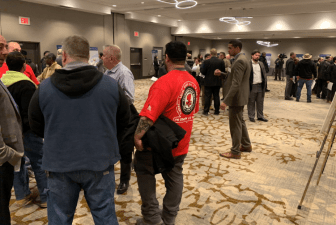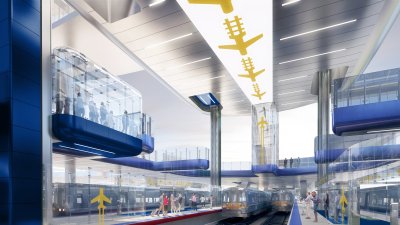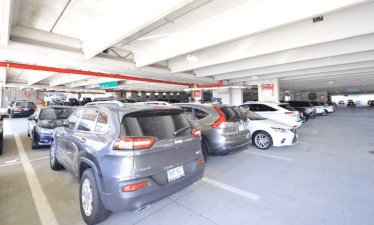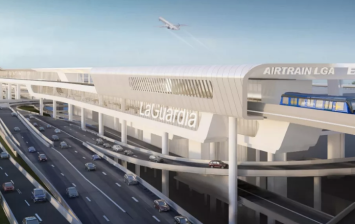Op-Ed: The LaGuardia AirTrain Needs a Close Look
A $2 billion project affecting several neighborhoods demands the scrutiny of the city's land-use process.
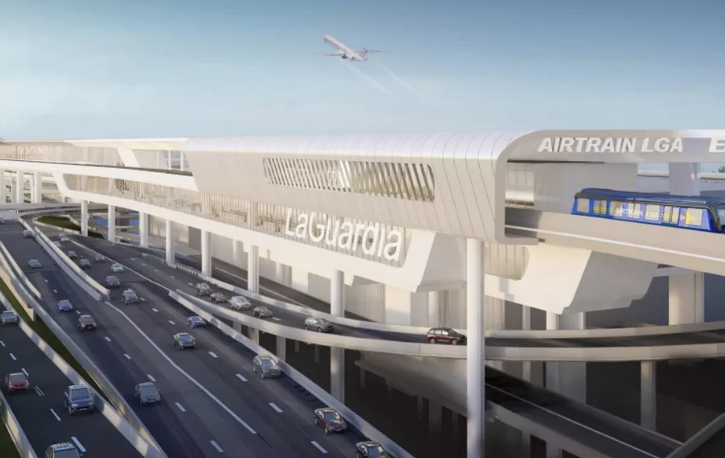
City & State NY is hosting a full day New York in Transit summit on Jan. 30 at the Museum of Jewish Heritage. This summit will bring together experts to assess the current state of New York’s transportation systems, break down recent legislative actions, and look towards the future of all things coming and going in New York. Join Keynote Speaker Polly Trottenberg, commissioner of the NYC Department of Transportation, along with agency leaders, elected officials, and advocates. Use the code STREETSBLOG for a 25-percent discount when you RSVP here!
The LaGuardia AirTrain started as a $500-million project, but its cost has ballooned to more than $2 billion. It is opposed by community groups, transit experts and environmentalists, who have called for halting the process until an independent study can be conducted. The project is shrouded in a secrecy that runs counter the scrutiny imposed by the city’s review system: the Uniform Land Use Review Process, or ULURP.
Two billion dollars is a lot of money for a project whose development is shrouded in secrecy and that the surrounding community doesn’t want.
In New York City, ULURP is required for major development projects when land use will be changed. The ULURP process takes months to complete because it allows many voices to be heard and perspectives to be considered before any project is approved. It is shocking that a project that involves New York City land has totally circumvented ULURP and moved forward in spite of strong community opposition.

ULURP engages the Department of City Planning, local community boards, the borough president, the City Council and the mayor. The various steps help to ensure that the information is complete, the environmental impact on the surrounding community is presented and that residents and businesses have an opportunity to weigh in. In contrast to the LGA AirTrain, the JFK AirTrain, which was built in the 1990s, went through the ULURP process, providing it with the scrutiny of hearings and votes of three community boards, the City Planning Commission and the City Council.
As chairman of the City Council committee charged with supporting and overseeing our community boards, I am troubled by the failure to fully engage the local community board in this important discussion.
Last November, I was invited by the Ditmars Boulevard Block Association to tour the neighborhood that is closest to the proposed project and whose homes and health would be most affected by the AirTrain. Even though the project is still in a proposal phase, the neighborhood has reported shaking and vibrations in the ground and sinking and cracking in foundations and interior and exterior walls of homes and buildings.
It is imperative to get real answers and demand full disclosure on a project whose cost has risen 400 percent and, based on analysis by transportation experts, would actually increase travel time to and from LaGuardia Airport by taking an impractical and circuitous route.

A cost-benefit analysis of this and all available alternatives must be conducted and presented to the public. All affected residents, businesses, community boards, the Queens borough president, City Council and mayor must be engaged. Projects slated for New York City land should be properly vetted through ULURP.
Fernando Cabrera (@FCabreraNY) is chairman of the City Council’s Governmental Operations Committee. He is holding a press conference on the LGA AirTrain at 10 a.m. Monday at City Hall. The Federal Aviation Administration’s next public meetings on the AirTrain are Jan. 14 and 15 from 6:30 to 8:30 p.m. in the Grand Ballroom of the New York LaGuardia Airport Marriott, 102-05 Ditmars Boulevard, East Elmhurst.
